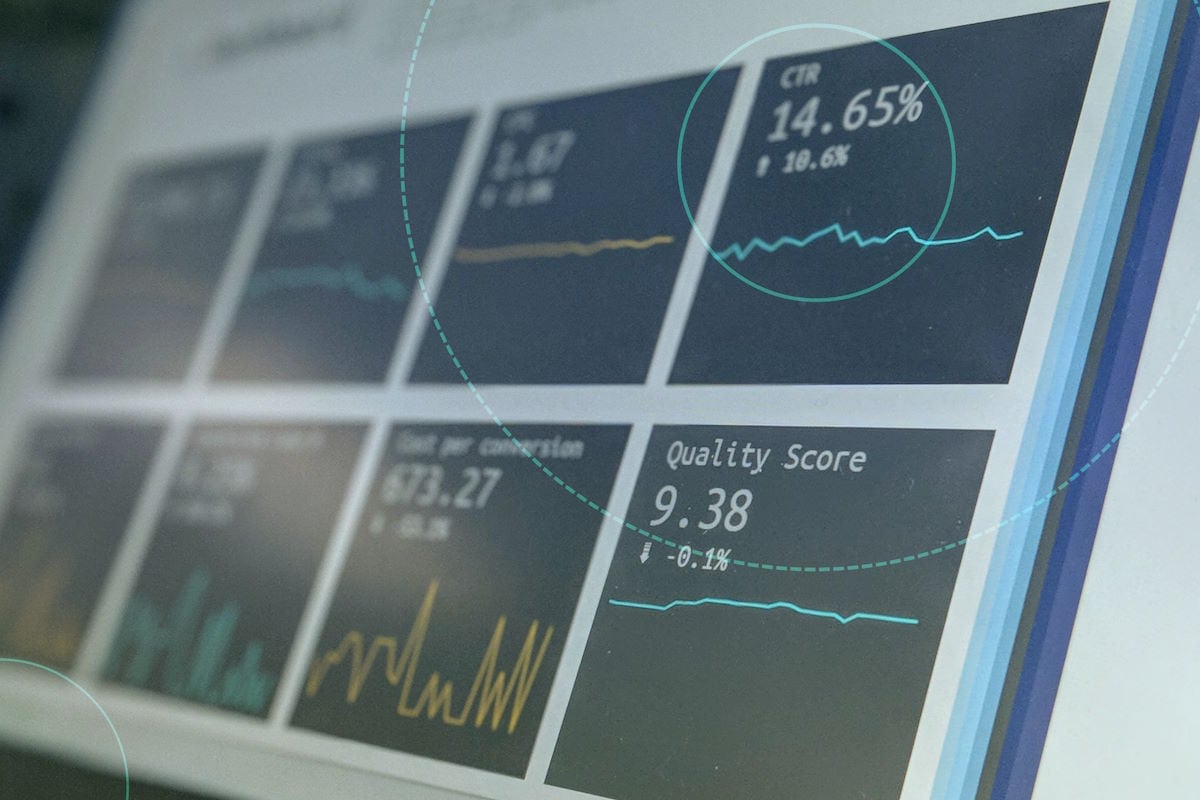Data-driven attribution can deepen marketers’ understanding of how their efforts drive conversions. Read this guide to learn how it works — and how to use it.
Leveraging vast data stores and machine learning can give you a better sense of what drives conversions — and what doesn’t
Last-touch, first-touch, time decay — each of the traditional marketing attribution models has advantages and disadvantages. But marketers are increasingly converging on a unique and innovative model that may be the most effective overall: data-driven attribution.
While most traditional attribution models provide some insight into how customers find your product or service, many of them struggle to account for the complexity of the customer journey. If a customer first learns about your product in a connected TV (CTV) ad, sees two more search ads, and finally makes a purchase after clicking a display ad, which of those steps was most important? Ask a dozen marketers and you’ll get a dozen answers.
Using attribution analytics, the data-driven model aims to answer that question not with assumptions, but with real-world information. Here’s how it works and how you can use it to your benefit.
Ready to explore more angles of attribution? Check out The Modern Marketer's Guide to Attribution.
What Is Data-Driven Attribution?
Data-driven attribution taps into all your consumer tracking mechanisms, pulls out the relevant information, and then uses machine learning to build a custom attribution model for your business. It looks at both converting and non-converting customers to determine how each touchpoint they interacted with contributed to their likelihood of conversion. It also asks key questions about those touchpoints: How many did the customer see? What channels were they on? Did the customer see them via a phone or a laptop?
The more of this data you have — and the more accurate it is — the more effective your model will be. That means you’ll need to use channels that can answer these questions. One powerful option is CTV, which uses powerful tracking capabilities to teach you about your customers. To learn more about how CTV can fuel your marketing, read our free CTV Advertising Playbook.
By evaluating these in-depth attribution analytics, data-driven attribution paints a more and more accurate portrait of which touchpoints, in which configurations, have the biggest impact on conversion rates.
Why Is Data-Driven Attribution Important?
As a baseline, data attribution is paramount for marketers. The better you understand how each of your marketing efforts lands with consumers, the more precisely you can strategize, budget, and capitalize on the greatest hits. Data-driven attribution can help you take that positive feedback loop to new heights.
Accurately Measure ROI
First and foremost, that means getting a closer bead on return on investment (ROI). In traditional attribution models, measuring the ROI of a touchpoint can be extremely challenging. Marketers can’t read customers’ minds, so they can only guess at which touchpoint made the biggest difference for a buyer. Plus, marketer biases and assumptions can obscure the correct answer.
But when they feed all of that data into a powerful machine learning algorithm, marketers can do away with bias and engage with individual customer decisions. By comparing each customer against every other customer, the attribution algorithm can gauge how specific touchpoints affect conversion odds. Suddenly, marketers can get a clear view of which channels, campaigns, and keywords are doing the heavy lifting and which are lagging.
Optimize Spending
The more deeply you understand the effectiveness of the many touchpoints you deploy, the more confidently you can allocate budget. For example, if you know one of your campaigns is having an outsize effect convincing customers to convert, you can invest more budget there and double down on your success. On the flip side, once you know where your ad dollars are falling short, you can either rework the campaign or redirect funds elsewhere. Keep this up and you can land on an ad budget that’s all killer, no filler.
Tips for Using Data-Driven Attribution Effectively
According to Google, advertisers who switch to data-driven attribution see an average 6% increase in conversions. But getting that boost isn’t as simple as flipping a switch. Here’s how you can get the most out of your new model.
Set Concrete Goals
Regardless of your attribution model, it’s important to remember that it is a tool, not a solution. You’ll need to set your priorities around what you want to achieve with it and design processes that lead you toward those goals. Are you trying to grow your conversions or optimize your spending efficiency? How many new accounts are you aiming for? How much do you want to spend per new customer? Picking a target and working toward it will help you stay focused, driving more rapid results.
Build Out Tracking and Measurement Systems
The more data you have, the better your data-driven attribution will work — as long as that data is high-quality and meaningful. To cover those bases, you’ll likely need to set up Urchin Tracking Module (UTM) parameters that cover website visits and conversions. You’ll then need to decide what other data points you think are worthwhile and set UTMs for them.
Google Analytics 4 tracks some of these factors by default. You can access that data by navigating to Reports, and then clicking on Traffic Acquisition. That’s also where you’ll be able to add additional UTMs.
Make sure that every campaign you run has its own unique identifier. That way, when you’re looking at reports, you know exactly what you’re seeing. Speaking of reports…
Regularly Review Reports
Reviewing attribution reports gives you a chance to identify your high-performing and low-performing touchpoints. As we’ve discussed, that data is crucial for adjusting your strategy and spend. But it will also change over time. So will your model, as more data will help it grow more accurate. To stay ahead of changing market conditions, and to equip yourself with the best possible data, you’ll need to regularly check in on attribution reports.
Reports also provide a chance to spot anomalies in your marketing. If you see attribution results that don’t make sense, you may have to correct some misplaced gates or adjust your tracking techniques. And the sooner you do, the better.
Understand Your Audience with tvScientific
The more you know about what works and doesn’t, the more efficient your marketing efforts will become. That’s why tvScientific designed a CTV marketing platform that emphasizes transparency. The measurement and attribution features it offers can help you track the entire customer journey, from initial ad impression through to purchase. Plus, its precision targeting capabilities set your ads up for success by putting them in front of the most receptive audience.
To learn more about how tvScientific can aid your marketing efforts, get in touch today.







